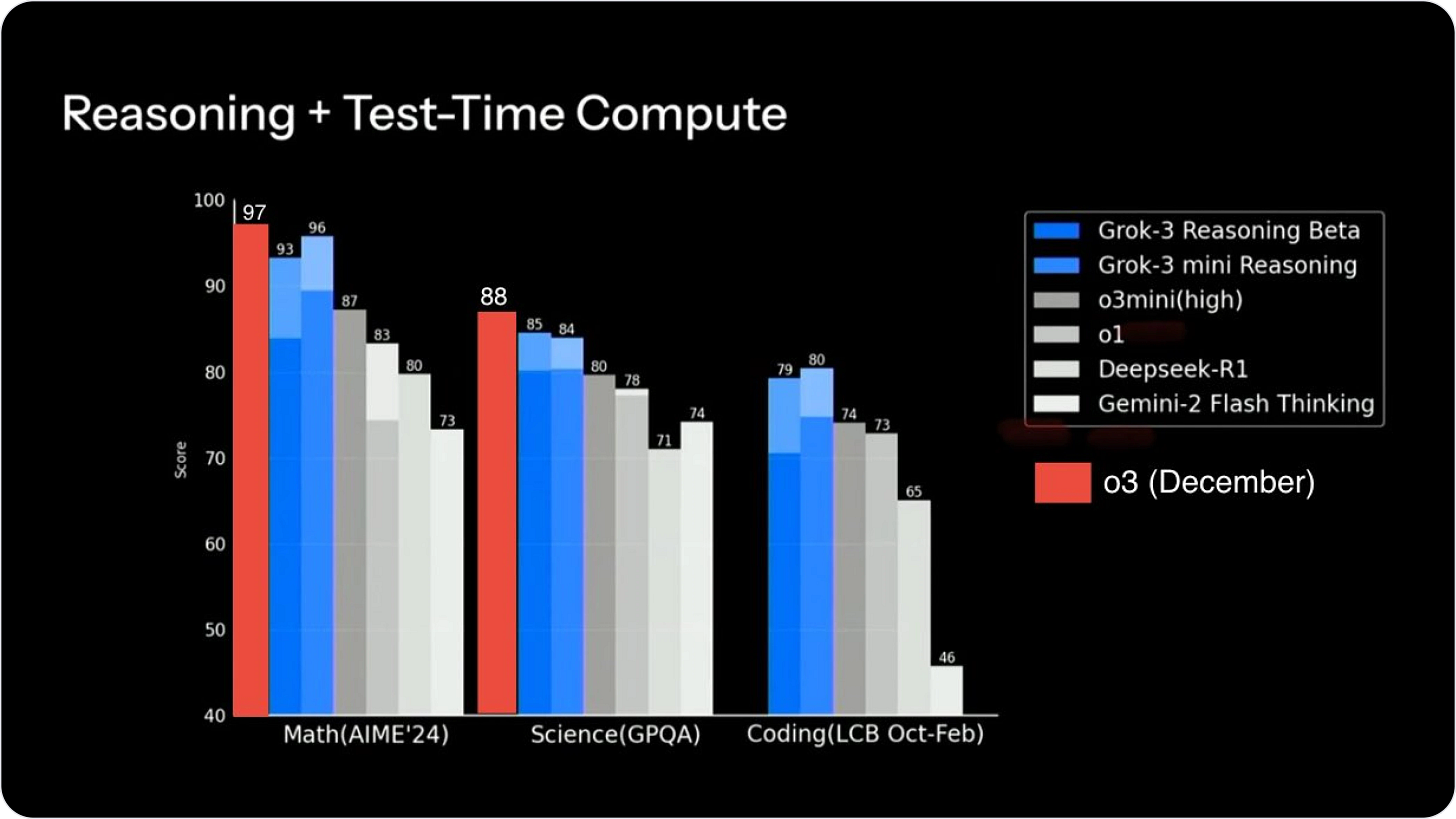𝗧𝗵𝗲 𝗡𝗲𝗲𝗱 𝗳𝗼𝗿 𝗦𝘁𝗮𝗻𝗱𝗮𝗿𝗱𝗶𝘇𝗮𝘁𝗶𝗼𝗻 𝗶𝗻 𝘁𝗵𝗲 𝗥𝗮𝗽𝗶𝗱𝗹𝘆 𝗘𝘃𝗼𝗹𝘃𝗶𝗻𝗴 𝗔𝗜 𝗟𝗮𝗻𝗱𝘀𝗰𝗮𝗽𝗲
With the recent release of xAI’s 𝗚𝗿𝗼𝗸 𝟯, which has surpassed all previous benchmarks, and the introduction of the 𝗚𝗿𝗼𝗸 𝟯 𝗿𝗲𝗮𝘀𝗼𝗻𝗶𝗻𝗴 𝗺𝗼𝗱𝗲𝗹, we are witnessing an era of unprecedented advancements in AI. Similarly, models like 𝗗𝗲𝗲𝗽𝗦𝗲𝗲𝗸 𝗥𝟭 have demonstrated superior performance, exceeding the benchmarks set by 𝗢𝗽𝗲𝗻𝗔𝗜’𝘀 𝗚𝗣𝗧 models. The pace at which new models are emerging highlights the intense competition and rapid innovation in the field of artificial intelligence.
For companies looking to build professional AI solutions, selecting a base model and fine-tuning it for specific use cases is a crucial step. However, with new models being introduced frequently, the 𝗹𝗮𝗰𝗸 𝗼𝗳 𝘀𝘁𝗮𝗻𝗱𝗮𝗿𝗱𝗶𝘇𝗮𝘁𝗶𝗼𝗻 creates significant challenges in interoperability and integration. While middleware solutions like 𝗟𝗮𝗻𝗴𝗖𝗵𝗮𝗶𝗻 offer some level of compatibility, the industry still lacks a 𝘂𝗻𝗶𝘃𝗲𝗿𝘀𝗮𝗹 𝘀𝘁𝗮𝗻𝗱𝗮𝗿𝗱 that can streamline model selection, fine-tuning, and deployment.
Establishing a 𝗰𝗼𝗺𝗺𝗼𝗻 𝗳𝗿𝗮𝗺𝗲𝘄𝗼𝗿𝗸 𝗳𝗼𝗿 𝗔𝗜 models would enhance efficiency, reduce complexity, and promote a more 𝗰𝗼𝗵𝗲𝘀𝗶𝘃𝗲 𝗔𝗜 𝗲𝗰𝗼𝘀𝘆𝘀𝘁𝗲𝗺. This would enable organizations to seamlessly adopt and integrate new models as they emerge, without being constrained by compatibility issues. While healthy competition is driving innovation, a standardized approach to model development and deployment would 𝗳𝗼𝘀𝘁𝗲𝗿 𝗰𝗼𝗹𝗹𝗮𝗯𝗼𝗿𝗮𝘁𝗶𝗼𝗻, 𝗶𝗺𝗽𝗿𝗼𝘃𝗲 𝗮𝗰𝗰𝗲𝘀𝘀𝗶𝗯𝗶𝗹𝗶𝘁𝘆, 𝗮𝗻𝗱 𝗮𝗰𝗰𝗲𝗹𝗲𝗿𝗮𝘁𝗲 𝗔𝗜 𝗮𝗱𝗼𝗽𝘁𝗶𝗼𝗻 𝗮𝗰𝗿𝗼𝘀𝘀 𝗶𝗻𝗱𝘂𝘀𝘁𝗿𝗶𝗲𝘀.
As the AI landscape continues to expand, the need for 𝗶𝗻𝗱𝘂𝘀𝘁𝗿𝘆-𝘄𝗶𝗱𝗲 𝘀𝘁𝗮𝗻𝗱𝗮𝗿𝗱𝗶𝘇𝗮𝘁𝗶𝗼𝗻 becomes increasingly urgent. By implementing universal guidelines for interoperability, companies can focus on leveraging AI’s full potential rather than navigating the complexities of integration.





